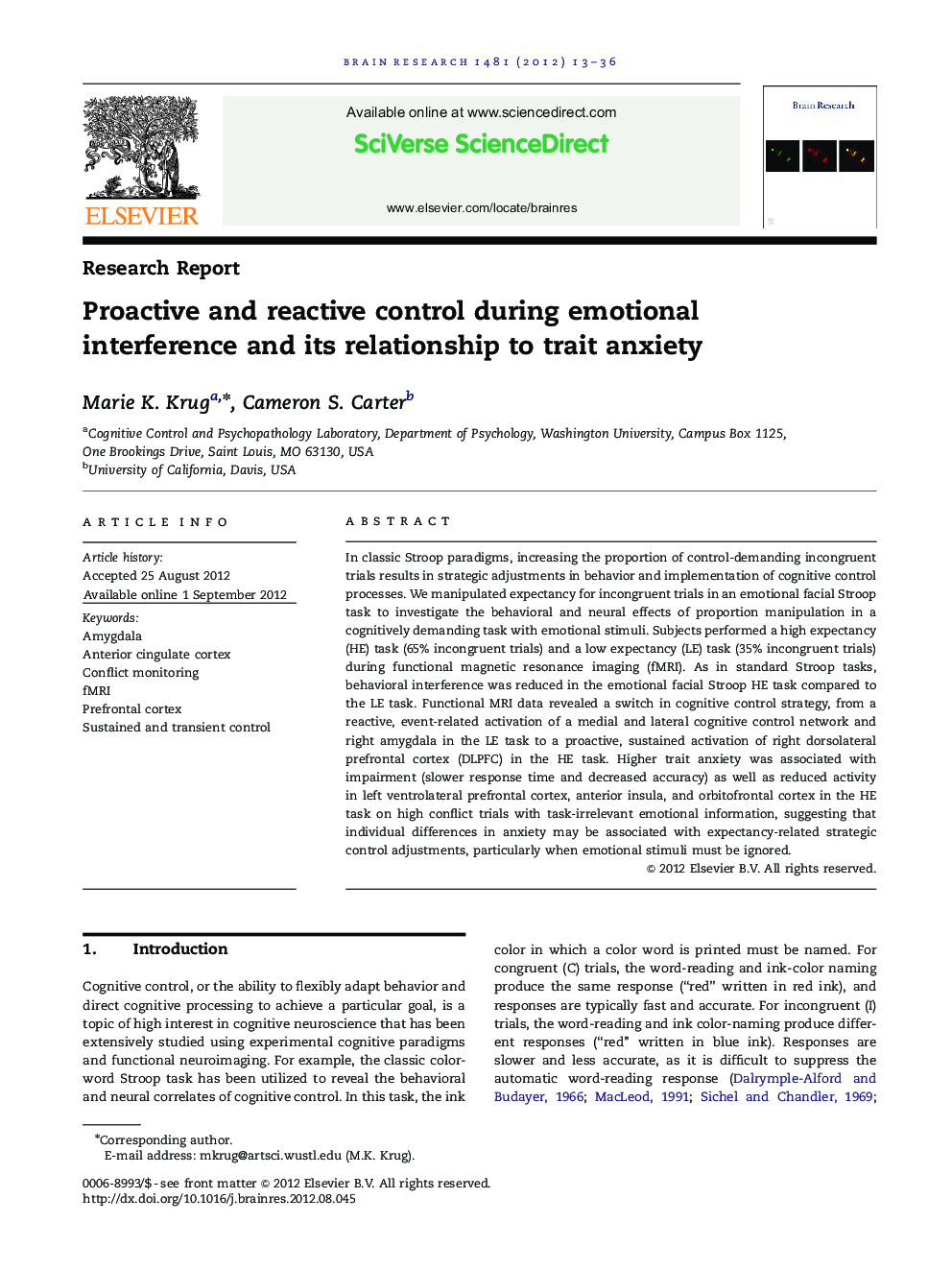| کد مقاله | کد نشریه | سال انتشار | مقاله انگلیسی | نسخه تمام متن |
|---|---|---|---|---|
| 4324971 | 1613958 | 2012 | 24 صفحه PDF | دانلود رایگان |

In classic Stroop paradigms, increasing the proportion of control-demanding incongruent trials results in strategic adjustments in behavior and implementation of cognitive control processes. We manipulated expectancy for incongruent trials in an emotional facial Stroop task to investigate the behavioral and neural effects of proportion manipulation in a cognitively demanding task with emotional stimuli. Subjects performed a high expectancy (HE) task (65% incongruent trials) and a low expectancy (LE) task (35% incongruent trials) during functional magnetic resonance imaging (fMRI). As in standard Stroop tasks, behavioral interference was reduced in the emotional facial Stroop HE task compared to the LE task. Functional MRI data revealed a switch in cognitive control strategy, from a reactive, event-related activation of a medial and lateral cognitive control network and right amygdala in the LE task to a proactive, sustained activation of right dorsolateral prefrontal cortex (DLPFC) in the HE task. Higher trait anxiety was associated with impairment (slower response time and decreased accuracy) as well as reduced activity in left ventrolateral prefrontal cortex, anterior insula, and orbitofrontal cortex in the HE task on high conflict trials with task-irrelevant emotional information, suggesting that individual differences in anxiety may be associated with expectancy-related strategic control adjustments, particularly when emotional stimuli must be ignored.
► Subjects performed a high expectancy (HE) incongruent facial Stroop task.
► Subjects performed a low expectancy (LE) incongruent facial Stroop task.
► The LE task activates an extensive control network and amygdala on a trial-by-trial basis.
► The HE task shows sustained control in right DLPFC and reduced interference.
► Subjects higher in anxiety show behavioral and neural impairment in the HE task.
Journal: Brain Research - Volume 1481, 24 October 2012, Pages 13–36